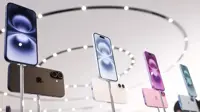“Labor der Zukunft” — Tomorrow’s laboratory technology
29 Feb 2012
Biomedical laboratories have to be safe, ergonomic and flexible. At the same time, labs need to be able to deal with a high throughput of samples while reliably documenting each step in the testing process.
Fraunhofer researchers are working to fully automate the processing of samples in tomorrow's laboratories. The scientists will be showing the effectiveness of their concept at the MEDTEC Europe trade fair in Stuttgart from March 13 to 15, 2012.
Anyone who goes to their doctor for a blood test generally has to wait a few days for the results. But this time of uncertainty can make patients anxious – especially in critical cases, such as a possible HIV infection. The fact that it takes so long for laboratories to analyse samples is in no small part due to all the cumbersome paperwork:
Each sample must be accompanied by meticulous records, so lab technicians are obliged to write a lengthy report including the patient's details, the results of the analysis and the testing methods employed.
This is a time-consuming and error-prone task, and one that researchers at the Fraunhofer Institute for Biomedical Engineering IBMT in St. Ingbert are tackling in their project ''Labor der Zukunft'' (laboratory of the future) . With funding from the Saarland Ministry of Economy and Science, they are developing a fully automated approach to testing, with a particular emphasis on automating the documenting of samples (www.labor-der-zukunft.com).
This demands a host of technical innovations, and the IBMT experts have come up with a number of concepts in collaboration with universities and medium-sized companies. Their main aim is to enable sample data to be processed automatically. A tiny microchip is embedded in the plastic of the test tube and used to store all relevant information, such as when and where a sample is from and the patient's name.
In the past, test tubes would be written on by hand; more recently, the data has been stored in a barcode for easy scanning. But this does not go far enough for a fully automated system, because information contained in a barcode cannot be edited. Microchips are different: When the test tube is placed into an analyser, the equipment can record details on the embedded chip of exactly what went on in the analysis. This means the test tube itself carries the sample's entire history – with no need for technicians to write up a laborious report.
''Usually, samples are accompanied by a report slip,'' says Daniel Schmitt, project leader for the IBMT. Alternatively, the lab will know to expect a sample when it receives an e-mail containing all the necessary information. ''With test tube chips, the sample and the information are inseparably linked, and there is no way for information to go astray.''
The IBMT researchers have since combined the chip with a tiny data antenna, as used in RFID tags, to allow close-range radio communication. This is particularly useful for biological samples, which are stored inside steel containers full of ice-cold nitrogen.
Since opening these containers risks allowing heat and moisture to enter, they are best kept shut. The antennas make it possible to query the test tube chips from the outside to see which samples are in storage at any given time – meaning the steel casing is no barrier to inventory.
Some blood samples have to travel a long way. One example is samples of blood infected with HIV that are sent from Africa to be used in AIDS research.
''This is an area where automatic data storage is very helpful,'' says Schmitt. Of course, no automated laboratory would be complete without software to manage the analysis process. Researchers at the IBMT worked together with Soventec GmbH to develop the LabOS laboratory management system. Thanks to LabOS, as soon as a test tube is placed in a reader, a screen displays data on the sample's history and also what the next steps are. With not a scrap of paperwork in sight.
Currently, the operation of lab equipment is still in the hands of technicians, but in future this too is set to become automated. To this end, a network system was developed at the IBMT in collaboration with the Technische Universität Braunschweig to connect all apparatus to a central control point. This ''smallCAN'' bus system, which was inspired by the networking of automotive control units, even makes it possible to access individual pieces of equipment over the Internet.
''Using smallCAN and LabOS, we can make lab operations almost entirely self-contained and testing can take place automatically,'' says Schmitt. That cuts down significantly on paperwork. Instead of spending precious time filling out report forms, technicians can concentrate on actual lab work, for instance preparing or organizing test tubes. This allows laboratories to increase both the throughput of samples and the quality of the results.
For some time now, the project partners have been able to demonstrate just how well all this technology works together thanks to a mobile lab. Housed in a truck that is traveling all over South Africa, it is mainly working to diagnose AIDS and tuberculosis.
''Our central control module even gives us access to truck data, for instance the current temperature inside the lab,'' says Schmitt. He is convinced this automation technology can also be put to use in normal labs. ''Once you've managed to set up that sort of apparatus - in such a tiny space, and to operate on the move - a normal lab is child's play.''



.webp)





























